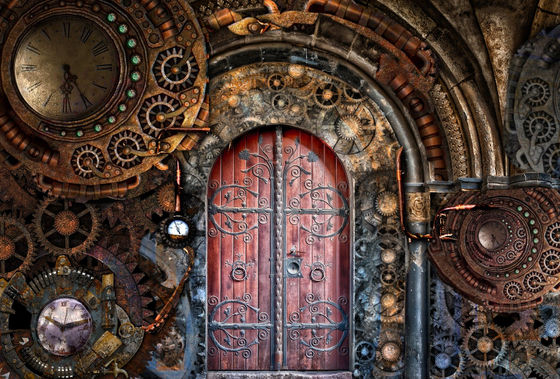What is the 'quantum steampunk' academic field that links thermodynamics and quantum theory?

Quantum Steampunk: 19th-Century Science Meets Technology of Today-Scientific American
https://www.scientificamerican.com/article/quantum-steampunk-19th-century-science-meets-technology-of-today/
' Steampunk ' refers to a work that has a world view with a steam engine widely established based on the atmosphere of Victorian and Edwardian in England. ' Howl's Moving Castle ' ' Wild Wild West ' ' Final FANTASY VI 'is known as a representative example of steampunk.

Steampunk, which depicts a steam engine that has developed in a brick cityscape, is a “fusion of the past and the future”. Mr. Halpern calls 'quantum steampunk' and is studying the study aiming at fusion of the past and future of thermodynamics of the 19th century and modern quantum theory.
Thermodynamics is an academic field that started from a practical object called a
Mr. Halpan's goal in the field of quantum steampunk is 'updating the old thermodynamics'. Halpan argues that quantum laws such as entropy functions, quantum resource theories , and fluctuation theorems in small-scale quantum systems can update traditional laws of thermodynamics .
Mr. Halpan is currently conducting theoretical research on a power engine called ' quantum engine '. A gasoline engine installed in a vehicle or the like sucks in outside air, mixes it with gasoline, and compresses this mixed gas. Then, four steps of 'intake', 'compression', 'combustion / expansion' and 'exhaust' of burning / expanding the compressed mixed gas and exhausting are repeated to convert thermal energy into kinetic energy based on the principle of thermodynamics. doing.

The quantum engine is a system that replaces the thermodynamic principle underlying the gasoline engine with quantum theory. The quantum engine will release thermal energy to the external environment by repeating

Mr. Halpan argued that thermodynamics-based molecular switches, solar power generators, heat dissipation transistors, and other technologies have been introduced in recent years, saying that 'the academic field combining thermodynamics and quantum theory is a new invention. Should produce. ' He said he could advance this discipline by integrating the theories within quantum steampunk and reviewing existing definitions and results to develop new tools.
Related Posts:
in Science, Posted by darkhorse_log







